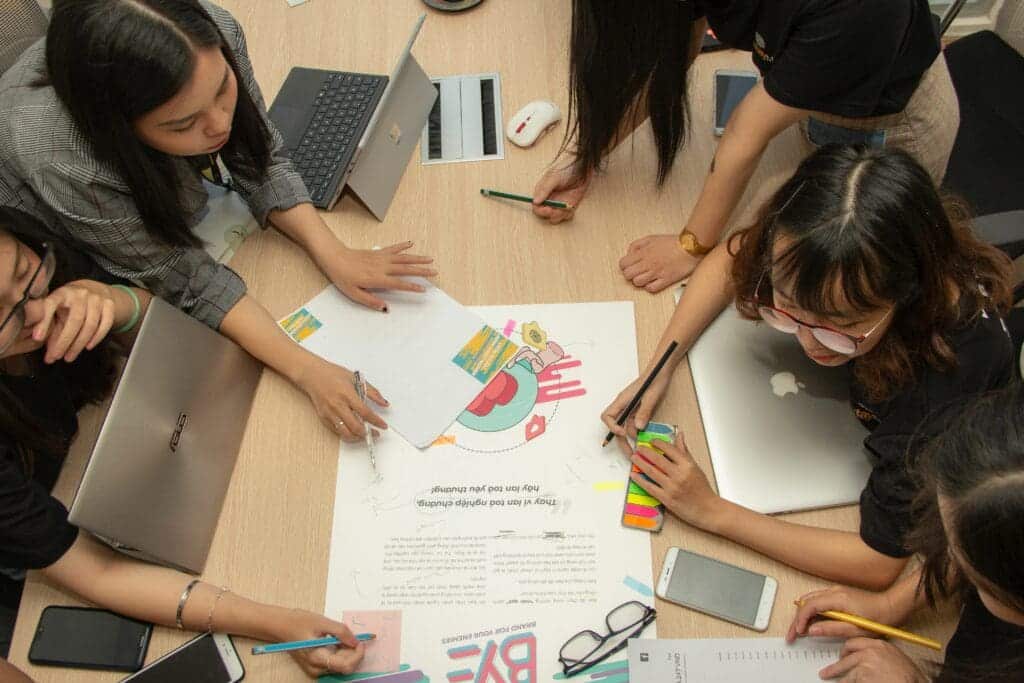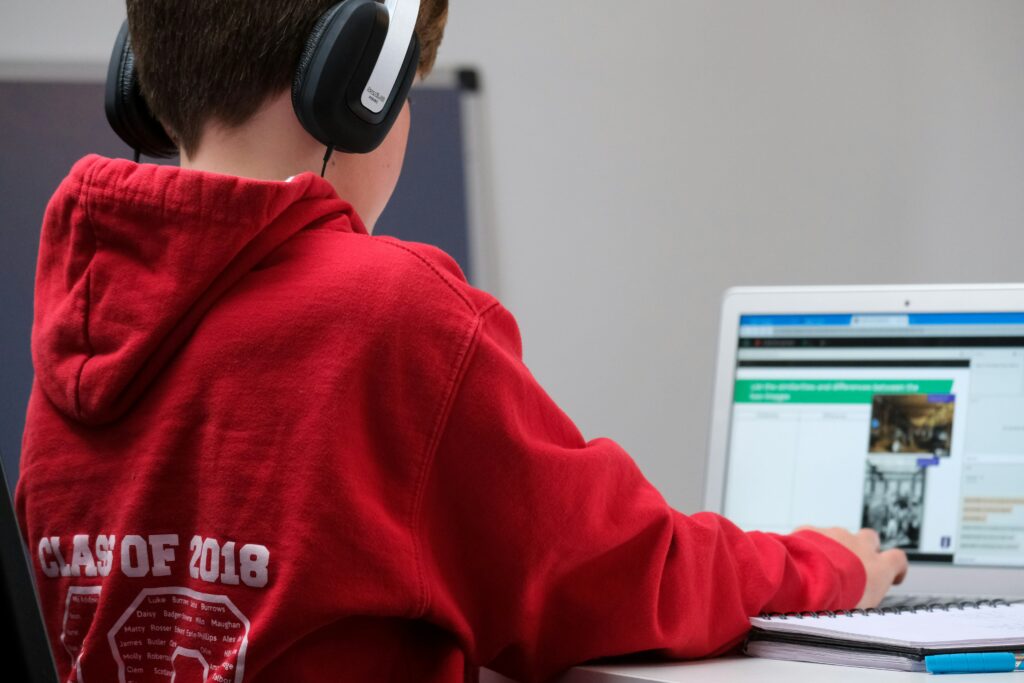Introduction to Technology in Education

The landscape of education has witnessed a transformative journey, evolving from traditional pedagogical methods to a dynamic ecosystem powered by technology. Initially, learning was confined to the four walls of classrooms, relying heavily on textbooks, chalkboards, and face-to-face interactions between educators and students. However, the advent of digital tools has revolutionized this approach, leading to unprecedented changes in how knowledge is imparted and acquired.
With the integration of technology in education, learners of all ages have access to resources that were once unimaginable. The shift from conventional teaching methods to tech-centric strategies enables a more personalized learning experience, catering to individual learning styles and paces. Digital platforms and e-learning tools offer a broad spectrum of educational content, from interactive multimedia presentations to engaging online courses, making learning more appealing and effective.
The increasing reliance on technology has also democratized access to information. Students, regardless of geographical location, can now partake in global learning opportunities through virtual classrooms and online educational resources. This accessibility not only enhances knowledge acquisition but also fosters collaborative learning environments, where students can interact with peers and instructors from diverse backgrounds.
Furthermore, technology in education has paved the way for innovative assessment methods, allowing educators to track learner progress more accurately through data analytics. This data-driven approach helps in tailoring educational interventions to meet specific needs, ensuring that every learner can thrive. In this context, technology serves not merely as a tool but as a catalyst for a more inclusive and effective educational experience.
As we delve deeper into the impact of technology on learning, it is essential to recognize its pivotal role in shaping the future of education, fostering an environment where learners can engage actively and meaningfully with content that resonates with their personal and academic goals.
The Rise of Online Learning Platforms

In recent years, the emergence of online learning platforms, specifically Massive Open Online Courses (MOOCs), has significantly transformed the educational landscape. These platforms have democratized access to education, allowing learners from various backgrounds to enroll in courses offered by prestigious institutions worldwide. This shift has challenged the traditional educational model, which often requires physical attendance and rigid schedules.
Online learning platforms provide an extensive range of courses that cater to different interests and skill levels. Learners can choose from a plethora of subjects, from computer programming to art history, illustrating the diverse options available. This variety enables personalized learning experiences where students can select courses that align with their career goals or personal preferences. Such flexibility is often absent in conventional educational settings, where curriculum structure may limit choice and adaptability.
Furthermore, the integration of advanced technologies has enhanced the overall online learning experience. Interactive multimedia content, discussion forums, and real-time assessments contribute to a rich educational environment. This immersion encourages active participation and fosters a sense of community among learners, even in a digital format. The adaptability of online platforms allows for learning to take place at the learner’s own pace, accommodating different learning styles and schedules.
However, while these platforms offer significant advantages, it is important to acknowledge the challenges they pose to traditional educational institutions. The rise of online learning has prompted many universities and colleges to reassess their teaching methodologies and curricula, often resulting in the development of hybrid models that integrate both in-person and online components. This adaptation signifies a significant cultural shift in how education is delivered and perceived, paving the way for a more flexible and personalized approach to learning.
Gamification: Learning Through Play

Gamification in education refers to the incorporation of game design elements into learning activities to enhance student engagement and motivation. By utilizing components such as points, badges, leaderboards, and challenges, educators create an interactive environment that transforms traditional learning into a more dynamic experience. This approach not only encourages active participation but also fosters a sense of achievement among learners, making the educational process more enjoyable.
The positive effects of gamification on the learning experience have been widely documented. For instance, schools and universities implementing gamified curricula frequently report improved student participation and retention rates. Research indicates that when students are motivated by rewards and competition, they are more likely to engage deeply with the subject matter. This intrinsic motivation can lead to a more profound comprehension and retention of information as students willingly invest time and effort in their studies.
One notable example of gamified learning is the use of platforms like Kahoot!, where educators create quizzes and interactive games to assess students’ knowledge. Students can compete against each other in real-time, which not only makes learning fun but also reinforces their understanding of the subject. Another example is Duolingo, a language-learning app that employs gamification techniques to encourage daily practice and vocabulary retention through varied exercises and streak rewards.
Moreover, gamification allows for personalized learning experiences. By tailoring challenges to individual skill levels, students can progress at their own pace, experiencing a sense of accomplishment as they advance. As they complete levels, the sense of achievement boosts their confidence and enthusiasm for learning. It is evident that gamification is more than just a trend; it is a powerful educational tool that reshapes how students interact with and absorb knowledge, leveraging the natural appeal of play to facilitate learning.
Artificial Intelligence and Personalized Learning

Artificial intelligence (AI) is rapidly transforming the educational landscape, particularly in the realm of personalized learning. By leveraging advanced algorithms and data analytics, AI technologies facilitate adaptive learning environments that cater to the unique needs of each student. This personalization is increasingly essential, as traditional one-size-fits-all teaching methods often fail to accommodate diverse learning styles and paces.
One of the most significant advancements is the development of adaptive learning technologies, which monitor a student’s progress in real-time. These systems assess individual strengths and weaknesses, dynamically adjusting the educational content accordingly. For instance, if a student struggles with a particular concept, the platform can provide additional resources or alternative explanations tailored to their understanding. This targeted approach not only enhances comprehension but also boosts student engagement and motivation, often leading to improved academic outcomes.
Moreover, AI tutors represent another innovative aspect of this personalized learning framework. These intelligent systems interact with students to provide instant feedback and support, simulating a one-on-one tutoring experience. Unlike traditional educators, AI tutors can be available around the clock, ensuring that learners have access to help whenever they need it. This flexibility can be particularly beneficial for students who may require extra assistance outside of regular school hours.
The integration of AI in education is not without its challenges, including concerns about data privacy and the need for digital literacy among both educators and students. However, the potential benefits of personalized learning experiences facilitated by AI are substantial. By tailoring educational content to individual needs, technology can help students achieve their full potential, promoting lifelong learning and adaptability in an increasingly complex world.
Virtual and Augmented Reality in Learning

Virtual reality (VR) and augmented reality (AR) are revolutionizing the educational landscape by creating immersive learning experiences that significantly enhance student engagement and understanding. These technologies offer learners the opportunity to interact with complex concepts in a tangible manner, moving beyond traditional textbooks and lectures. By employing simulations and real-world applications, VR and AR enable students to visualize and manipulate 3D representations of intricate ideas, thereby deepening their comprehension.
One of the most notable aspects of VR in education is its ability to transport learners to environments and scenarios that would otherwise be inaccessible or impractical. For instance, medical students can practice surgical procedures in a simulated operating room, allowing them to hone their skills without the associated risks of real-life surgeries. Similarly, environmental science programs can use VR to illustrate the impact of climate change by simulating various ecological systems, thereby fostering a more profound understanding of global issues.
On the other hand, AR technology enhances the physical world by overlaying digital information onto real-life environments. This fusion allows learners to receive contextual information right in front of them, making lessons more interactive and relevant. For example, when studying historical landmarks, students can utilize AR apps to view historical events as they occurred, which not only enriches their learning experience but also encourages them to explore these subjects further.
Furthermore, both VR and AR have demonstrated their effectiveness in catering to different learning styles. Visual learners benefit from engaging graphics and simulations, while kinesthetic learners gain from hands-on experiences. By providing varied pathways for engagement, these technologies address diverse educational needs, ultimately promoting better retention and understanding of concepts.
In summary, the integration of virtual and augmented reality into learning environments is reshaping the way knowledge is imparted and acquired. These technologies provide immersive, interactive experiences that encourage learners to explore and grasp complex ideas more effectively.
Collaborative Learning in the Digital Age

In the modern educational landscape, technology has revolutionized the way learners engage with one another and acquire knowledge. Central to this transformation is the concept of collaborative learning, which fosters teamwork among individuals regardless of their physical location. Various technological tools have emerged, enhancing opportunities for peer-to-peer interaction and collective problem-solving.
Collaborative documents, such as Google Docs, allow multiple users to edit and comment on content in real-time. This feature eliminates the burdens of geographical constraints, enabling students from different parts of the world to work together seamlessly. By utilizing these platforms, learners are not just sharing ideas, but are also contributing to a greater pool of knowledge, enhancing their own understanding in the process.
Furthermore, online forums and discussion boards serve as platforms where learners can exchange thoughts and seek peer assistance. Tools like these promote an inclusive educational environment, encouraging students to learn from each other’s experiences and insights. This interaction deepens the learning process, as individuals critically engage with diverse perspectives that challenge their own reasoning and understanding.
Communication platforms like Slack and Microsoft Teams offer another layer of collaboration by providing spaces for continuous dialogue. These tools facilitate synchronous and asynchronous communication, allowing learners to connect at their convenience. The ability to discuss ideas in real time, share resources, and provide feedback instantaneously fosters a sense of community among participants, enhancing their overall educational experience.
Overall, the integration of technology in collaborative learning not only breaks down geographical barriers but also promotes a culture of peer learning. By leveraging various technological tools, learners can engage more deeply, facilitating a more enriching and comprehensive approach to education in the digital age.
Challenges and Considerations in Tech-driven Learning

The integration of technology into educational practices has undeniably transformed learning environments. However, this transition does not come without its challenges. One primary concern revolves around access and equity issues. Not all students have equal access to the necessary devices or reliable internet connectivity, which can exacerbate existing educational disparities. The digital divide is a significant barrier that can hinder effective learning, particularly for those in low-income or rural areas, where resources are often limited.
Furthermore, the effectiveness of tech-driven learning relies heavily on the integration of technology into pedagogical practices. Merely providing access to educational tools is insufficient; educators must be equipped with the proper training to utilize these technologies effectively. This necessitates ongoing professional development aimed at helping teachers incorporate digital tools to enhance traditional curricula. Additionally, there is a need for a robust infrastructure to support this shift, including technical support and resources to ensure smooth implementation of new technologies in classrooms.
Another consideration stems from the potential over-reliance on technology, which can lead to decreased interpersonal skills among students. While online learning platforms enable flexibility and access to diverse resources, they can lack the social interaction and engagement found in face-to-face learning environments. Educators face the challenge of in balancing technology with traditional teaching methods to foster a comprehensive learning experience that promotes innovation and creativity while still nurturing essential social skills.
Moreover, issues surrounding data privacy and security cannot be ignored. As schools increasingly adopt tech-driven learning tools, maintaining the confidentiality and safety of student information becomes paramount. This introduces the challenge of ensuring that educational institutions comply with regulations regarding data protection while harnessing the benefits of technology in education.
Future Trends in EdTech

The advancement of educational technology (EdTech) is poised to significantly transform the landscape of learning in the near future. Emerging trends suggest a shift toward increasingly personalized and adaptive learning experiences, with artificial intelligence (AI) playing a pivotal role. AI-powered platforms analyze individual learning patterns, enabling them to tailor curricula to meet the specific needs of each student. This creates a more engaging and efficient learning environment, as students can progress at their own pace and receive immediate feedback to enhance their understanding.
Another prominent trend is the integration of virtual and augmented reality (VR and AR) into educational settings. These technologies provide immersive experiences that allow learners to explore complex subjects in a more interactive way. For example, students can take virtual field trips to historical sites or conduct virtual science experiments, thereby enriching their understanding of real-world concepts. This shift from traditional methods to experiential learning through EdTech tools can significantly increase student motivation and retention rates.
Moreover, the rise of microlearning is anticipated to reshape educational paradigms. This approach breaks down information into small, focused segments that are easier for learners to digest. With the ever-increasing demand for skills and knowledge in specific areas, microlearning facilitates targeted education that is accessible anytime and anywhere. This trend reflects a growing preference for bite-sized learning experiences that accommodate busy lifestyles and diverse learner needs.
Lastly, collaborative learning environments powered by cloud-based solutions are gaining traction. These platforms promote teamwork and connectivity among students, regardless of their geographical location. The ability to collaborate with peers across different regions encourages knowledge sharing and cultural exchange, enriching the overall learning experience.
These emerging trends in EdTech highlight the continuous evolution of educational methodologies and technologies, ultimately reshaping how both teachers and students engage with learning materials.
Conclusion: The Transformative Power of Technology in Learning

In examining the evolution of learning, it becomes evident that technology has played a transformative role in shaping educational practices. As we navigate through the digital age, the integration of technology into learning environments has not only altered how information is delivered but also how it is absorbed and retained. The emergence of multimedia resources, interactive platforms, and online courses has revolutionized traditional paradigms, making education more accessible and engaging for students of all ages.
One significant aspect of technology’s impact on learning is its ability to personalize the educational experience. Learners can now access customized content that aligns with their individual needs and learning paces. This tailored approach encourages self-directed learning, enabling students to take ownership of their educational journeys. Furthermore, technologies such as adaptive learning systems utilize data analytics to provide insights into student performance, allowing for timely interventions and support.
Moreover, technology fosters collaborative learning through online forums, social media, and collaborative tools. These platforms not only bridge geographical divides but also encourage diverse perspectives and peer-to-peer interactions, enriching the learning experience. The sense of community established through these technologies reinforces the notion that learning is a shared journey, one that thrives on collective knowledge and support.
Additionally, the convenience offered by e-learning platforms facilitates lifelong learning. Professionals can engage in continuous education through online courses that fit into their busy schedules, which is essential in today’s rapidly evolving job market. The ability to learn anytime and anywhere breaks down barriers, making it feasible for individuals to pursue new skills and knowledge throughout their lives.
In conclusion, technology’s influence on education is profound and multifaceted. It enhances traditional learning processes while fostering a lifelong love for learning. By embracing technology, we can enrich educational experiences, empower learners, and prepare ourselves for a future where learning is an ongoing endeavor.



Pingback: Unsolved Math Equations: Mysteries That Challenge Us
Pingback: Unleashing the Powerful Remote Learning Benefits in the Digital Age
Pingback: Mastering the Math Curriculum for Student Success
Pingback: Coding Introduction: Ignite Your Passion for Tech
Pingback: AI in Education: Inspiring Change for All Learners
Pingback: Awe-Inspiring Active Learning Techniques for Transformative Education
Pingback: Classroom Organization Techniques for Effective Teaching
Pingback: Organization for Students: Insane Tips for Success
Pingback: Mastering Reading Proficiency: Tips and Tricks for Faster and Deeper Understanding
Pingback: Astounding Tips to Improve Handwriting Mastery
Pingback: Importance of Sleep: Transform Your Bedroom for Rest
Pingback: Body Image in Adolescents: Tips for Improvement
Pingback: Explosive Side Hustle Ideas for Students to Thrive: Side Hustle Ideas for Students
Pingback: Study of Linguistics: Exploring the Fascinating Field
Pingback: Importance of Research: Mastering Research Skills
Pingback: Active Learning: What Is It, Why Does It Matter, and How Can It Transform Your Education? -